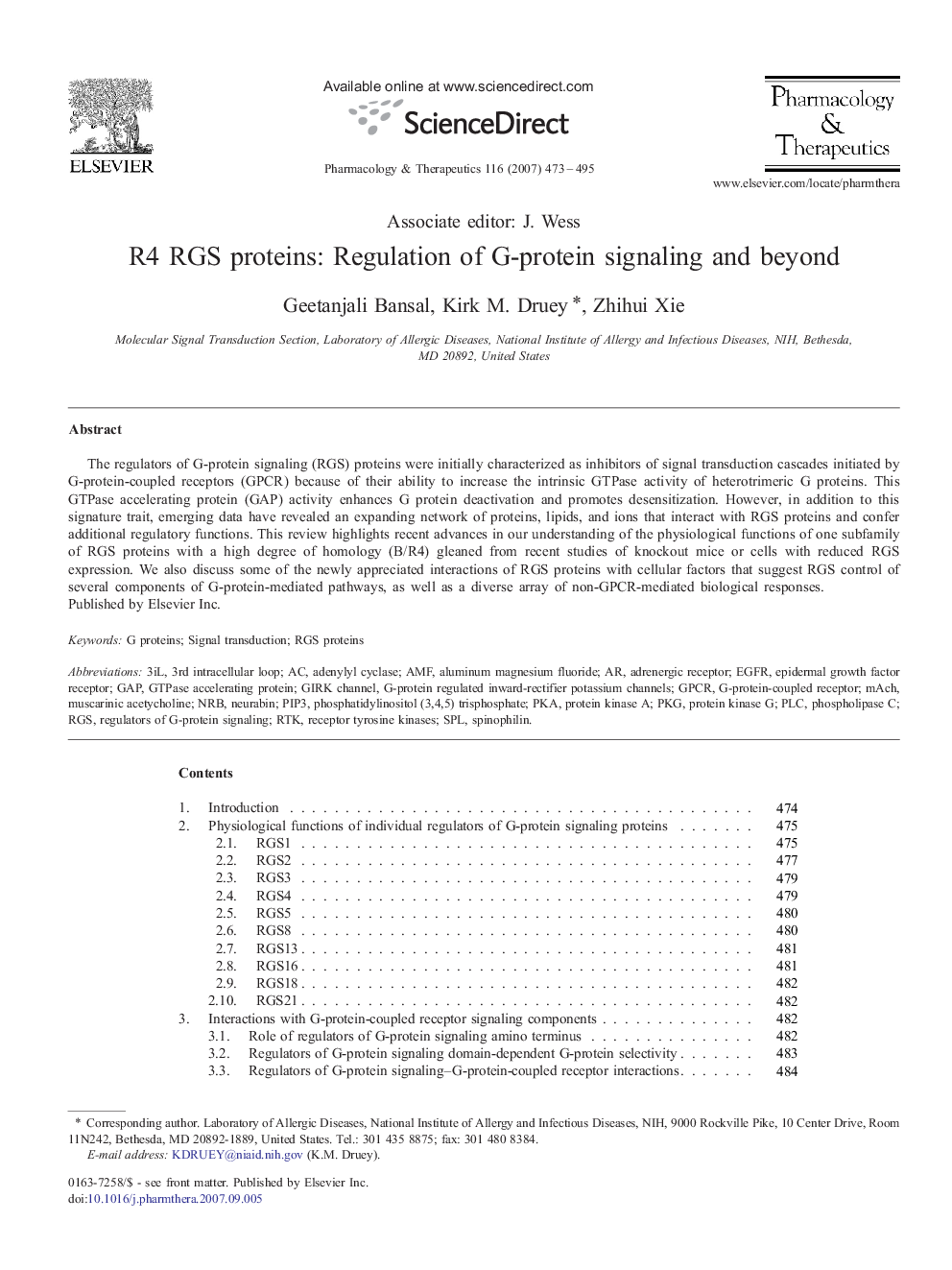| Article ID | Journal | Published Year | Pages | File Type |
|---|---|---|---|---|
| 2564214 | Pharmacology & Therapeutics | 2007 | 23 Pages |
The regulators of G-protein signaling (RGS) proteins were initially characterized as inhibitors of signal transduction cascades initiated by G-protein-coupled receptors (GPCR) because of their ability to increase the intrinsic GTPase activity of heterotrimeric G proteins. This GTPase accelerating protein (GAP) activity enhances G protein deactivation and promotes desensitization. However, in addition to this signature trait, emerging data have revealed an expanding network of proteins, lipids, and ions that interact with RGS proteins and confer additional regulatory functions. This review highlights recent advances in our understanding of the physiological functions of one subfamily of RGS proteins with a high degree of homology (B/R4) gleaned from recent studies of knockout mice or cells with reduced RGS expression. We also discuss some of the newly appreciated interactions of RGS proteins with cellular factors that suggest RGS control of several components of G-protein-mediated pathways, as well as a diverse array of non-GPCR-mediated biological responses.
